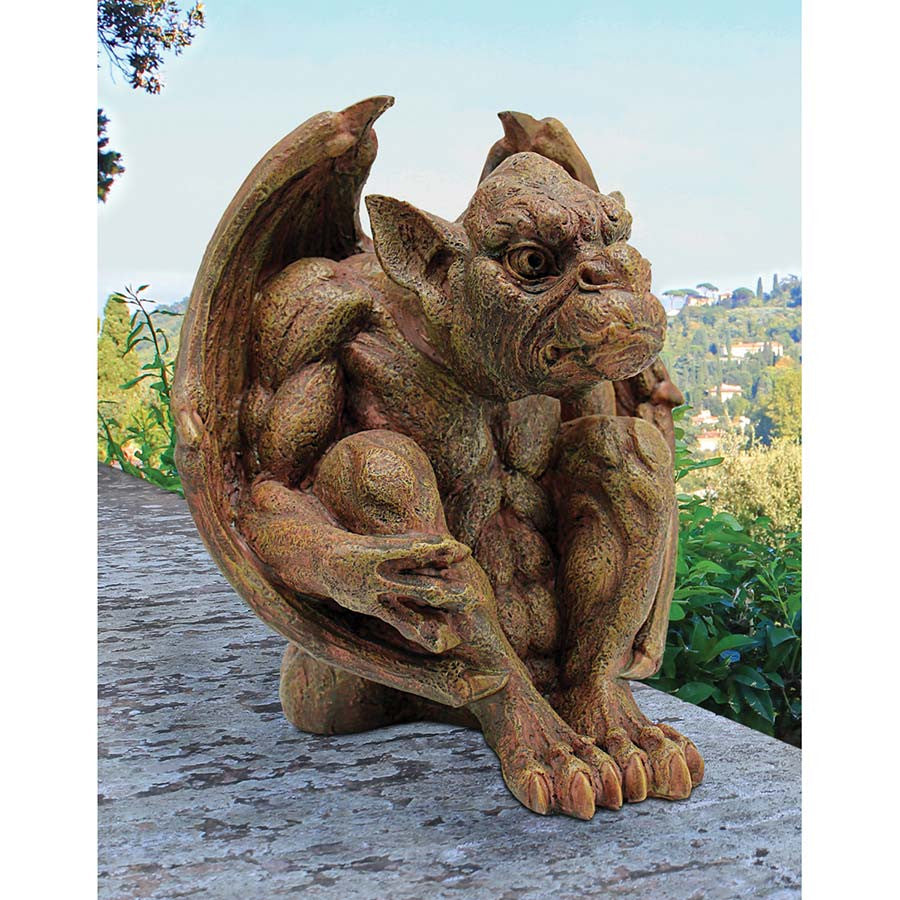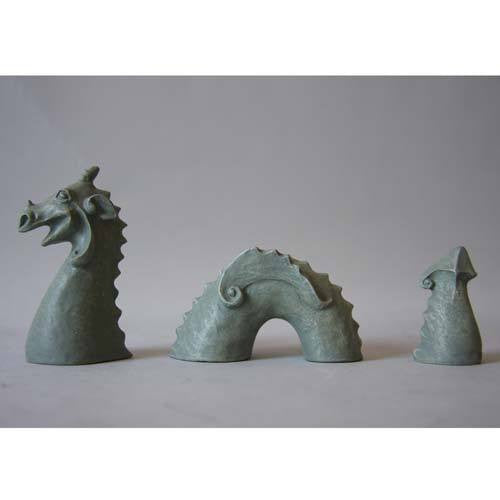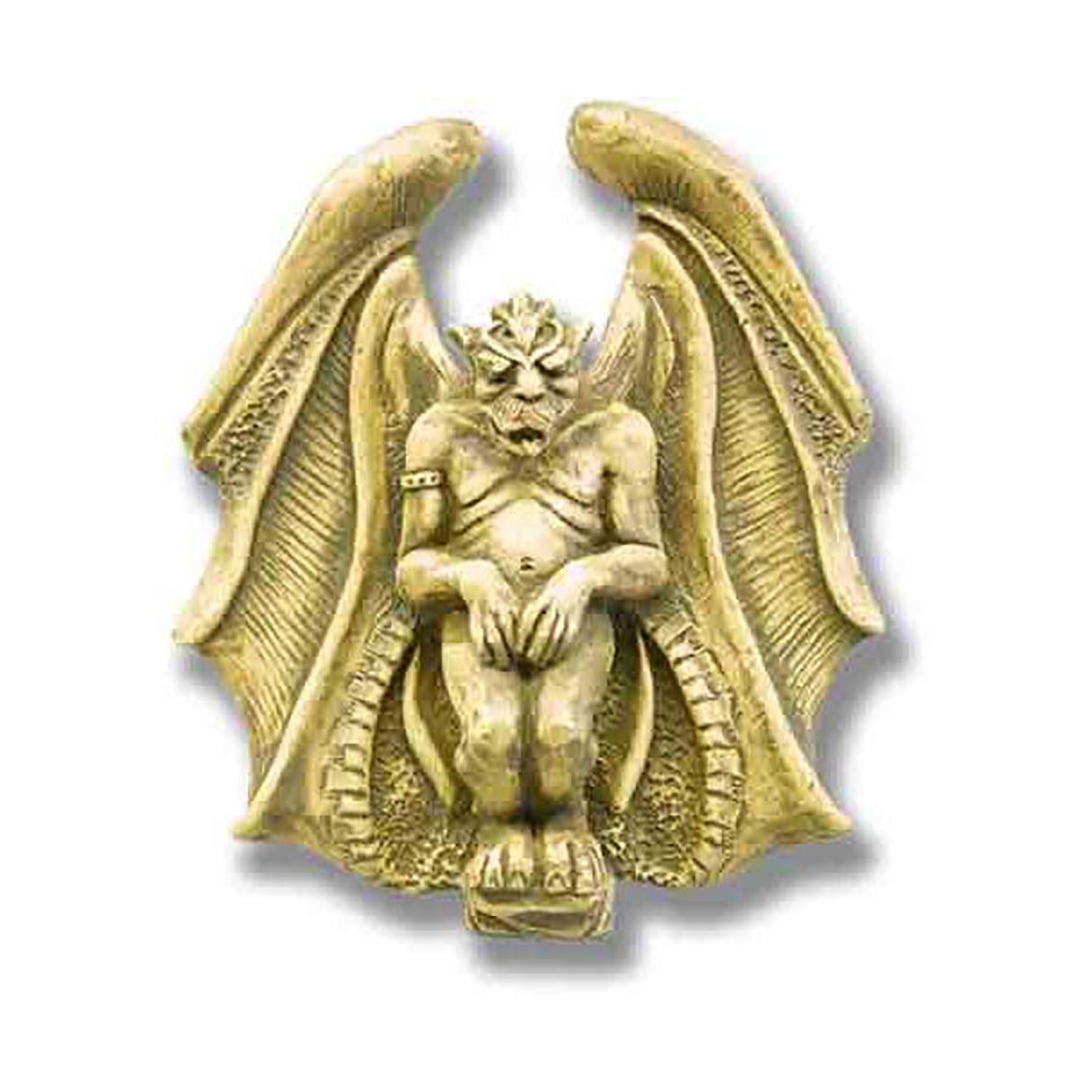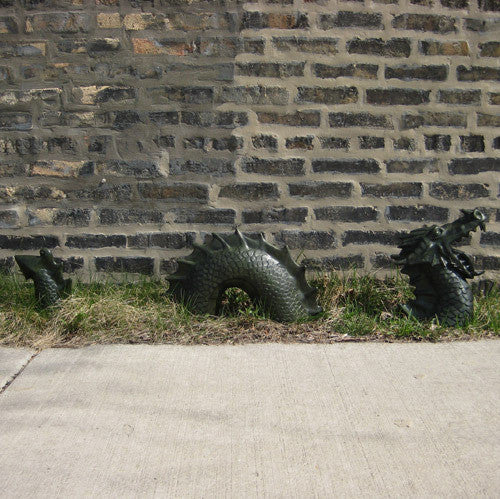Gargoyles bewitch and bewilder, characterizing myriad Gothic structures, particularly churches and cathedrals. They manifest as grotesque and monstrous creatures, at times bearing human visages and serving as waterspouts or ornamental embellishments. However, the etymology of their names raises perplexity—what secrets do they divulge about their past and symbolism?

Gargoyles in the form of dragon sculpture transcend mere stone carvings, embodying culture, history, mythology, religion, art, and architecture.
Gárgola: The Spanish term for gargoyle, also signifying "throat" or "gullet".
Doccione: The Italian term for gargoyle, translating to "protruding gutter".
Wasserspeier: The German word for gargoyle, meaning "water spitter".
By tracing their origins and unraveling their meanings, we unravel the mysteries of their creators and contexts and gain a profound appreciation for their beauty and enigma. Gargoyle sculptures stand not only as witnesses to the past but also as enigmatic emissaries of a bygone era.
Origin of Gargoyles
The term "gargoyle" stems from the French word "gargouille," which signifies "throat". This outright signifies their function as water conduits that redirect rainwater away from the edifices' walls and foundations. The word "gargouille" also traces its roots to the Latin "gurgulio," meaning "gullet" or "throat," and relates to the verbs "to swallow" or "to gurgle". This implies that gargoyles were linked to the sound and motion of water, as well as the notion of devouring or consuming it.

However, "gargouille" has another genesis, based on a legend from Rouen, France. According to this tale, a terrifying dragon known as La Gargouille unleashed havoc upon Rouen's denizens, breathing fire and flooding the town with its tail. A priest named St. Romanus managed to subdue the beast by invoking the sign of the cross, leading it to the town square, where it met its demise at the stake. Yet its head and neck proved impervious to the flames, prompting their placement on the church's wall as a trophy and protection against nefarious forces.
There are many theories that clarify why many gargoyles exhibit dragon-like attributes such as wings, scales, horns, and claws. Truth be told, many statues also illuminate how gargoyles epitomized both danger and salvation, representing the interplay between chaos and order, sin and redemption, and paganism and Christianity. Some scholars posit that gargoyles were employed to entice pagan tribes into the fold of the church, incorporating their animal deities or totems into Christian architecture.
Different gargoyle names and their meanings
Gargoyle names often mirror their appearance or characteristics, encompassing their animal form, expression, location, or function. For instance, some prevalent gargoyle appellations include:
- Griffin: A mythical creature boasting the body of a lion and the head and wings of an eagle Griffins frequently assume the role of guardians of wisdom and treasure, embodying strength and valor.
- Chimera: A hybrid entity composed of various animal parts, like a lion, goat, and snake. Chimeras are commonly regarded as symbols of malevolence and chaos, associated with fire and annihilation.
- Wyvern: A winged reptilian creature sporting a dragon-like head, a scaly body, two legs, and a spiny tail. Wyverns often symbolize power and sovereignty, linked to air and wind.
- Grotesque: A term encompassing any gargoyle devoid of a water spout function, existing purely for ornamental or symbolic purposes. Grotesques can assume any shape or form, ranging from human to animal to abstract. They are frequently seen as emblems of humor and whimsy, tied to creativity and imagination.
These examples merely scratch the surface of gargoyle names encountered across various structures worldwide. Gargoyle names can also differ depending on the culture, language, or region in which they reside. For instance, other language variants include:

How Can I Select An Exquisite Gargoyle Sculpture Of Superior Quality?
There are several factors to contemplate when opting for a magnificent gargoyle statue, including:
- The material: Gargoyle-face statues can be crafted from various materials like stone, resin, metal, or concrete. Each material possesses its own merits and demerits in terms of strength, weight, appearance, and cost. For instance, stone exudes a more organic and authentic feel, despite being heavier and pricier. On the other hand, resin is lighter and more affordable, but it is also more susceptible to fading and cracking.
- The size: Gargoyle statues come in a range of sizes, from petite figurines to grand sculptures. The size of your chosen gargoyle statue should harmonize with the space and style of your abode. If you desire to adorn your porch or balcony with a gargoyle statue, a smaller one would be more suitable, as it won't occupy excessive space or appear out of place. Conversely, if you wish to make a bold statement in your garden or yard, a larger gargoyle statue would captivate attention and serve as a focal point.
- The design: Gargoyle statues exhibit diverse designs, such as animalistic, human-like, or grotesque. The design of your chosen gargoyle statue should reflect your personality and preferences. For instance, if you have a penchant for adorable and amusing gargoyles, a winged cat or baby gargoyle face would appeal to you. If you are drawn to eerie and enigmatic gargoyles, a wolf or demon would be more fitting. Alternatively, if you appreciate classic and traditional gargoyles, a dog or lion would suit your taste.

Symbolism Associated With Gargoyles
Gargoyles embody a multitude of symbolic meanings across various cultures and contexts. Here are some common interpretations of gargoyles:
- Protection: Gargoyles served as guardians, particularly for buildings like churches, warding off malevolent spirits and detrimental forces. They also diverted rainwater away from the walls, averting damage and decay. Gargoyles symbolize safeguarding, security, and defense.
- Expression: Gargoyles were often carved with exaggerated or grotesque features, reflecting the emotions and fears of their creators. They were also associated with the throat or voice, as they spewed water or emitted sounds from their mouths. Gargoyles symbolize communication, creativity, and individuality.
- Balance: Gargoyles represented the union of the sacred and the profane, the spiritual and the material, and the light and the dark. They embodied the juxtaposition and equilibrium between different aspects of reality. Gargoyles symbolize duality, diversity, and integration.
- Transformation: Gargoyles were believed to come alive at night, soaring through the skies and battling evil. They also metamorphosed in appearance depending on the weather and lighting conditions. They epitomized the potency of change and adaptation. Gargoyles symbolize metamorphosis, renewal, and evolution.
Conclusion: Bringing Home a Gargoyle Statue
There is no particular moment or event to procure a gargoyle statue for your home, for it hinges upon your individual predilection and purpose. However, the myriad conceivable motives for harboring a gargoyle within your dwelling encompass:
- A desire to safeguard your abode from pernicious energies and influences, such as malevolent spirits, ill fortune, or detrimental forces.
- A yearning to express your idiosyncratic personality and preferences, encompassing your discernment in art, your inclination for amusement, or your fascination with medieval history.
- A longing to harmonize the disparate facets of reality, including the sacred and the profane, the spiritual and the material, the luminary and the somber.
- A wish to transmute the appearance and ambience of your abode, such as by fashioning a one-of-a-kind and captivating decor, infusing an air of enigma and fantasy, or amplifying the dynamic and adaptable atmosphere.
Irrespective of your rationale, it is imperative to select a gargoyle sculpture that deeply resonates with both you and your home, such as a sculpture head planter. Additionally, you can situate it in an appropriate place, be it the rooftop, the wall, the garden, or a pedestal. Furthermore, you can regularly sanitize and bestow blessings upon your gargoyle, employing sage, salt, water, or sunlight. In doing so, you ensure that your gargoyle functions to your utmost benefit, fostering an aura of positivity within your lovely residence.














